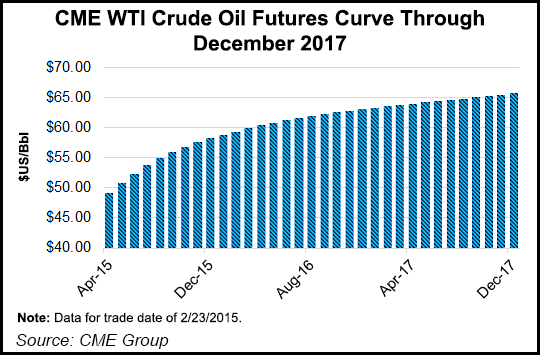E&P | Eagle Ford Shale | NGI All News Access | Permian Basin
Rosetta Cuts Spending Again, Saving Best Wells For Better Times
Eagle Ford Shale and Permian Basin operator Rosetta Resources Inc. is dialing back spending yet again, cutting guidance and vowing to fight another day when commodity prices have recovered.

Capital spending has been cut by 71%, and production is expected to be 18% lower as the company focuses on preserving balance sheet strength.
“We’ve chosen to defer production growth and focused instead on living within our means, maintaining our core acreage positions, and defending a target production level of about 60,000 boe/d. Our project inventory is intact and we stand ready to increase capital spending when commodity prices warrant,” said CEO Jim Craddock.
Based on current commodity price expectations, Rosetta plans to spend up to $350 million in capital per year for 2015 and 2016, operate within cash flow and deliver targeted annual production volumes of about 60,000 boe/d over the two years, the company said Monday.
The first year of the program is based on completing roughly 20 gross operated wells in the Eagle Ford and eight gross operated wells in the Permian. Rosetta said it will focus on the high rate of return areas in the southern Gates Ranch and the Wolfcamp A bench in the Delaware Basin. Drilling and completion costs should account for about 80% of the total spending, with the remaining 20% allocated to central facilities, leasehold, and other corporate costs.
“While we could spend more capital without stressing our balance sheet in this price environment, we do plan to execute a program that does not outspend the cash flow we expect to generate or require us to take on additional debt,” Craddock said during a conference call Tuesday. “Beyond living within cash flow there’s another key rationale driving our decision to restrict capital spending to this level. We simply do not believe that this is an opportune time to bring online the best wells in our portfolio, especially when those wells recover almost half of their present value in the first two years.”
Full-year 2015 production is expected to range 58,000-62,000 boe/d. For the first quarter production guidance is 64,000-67,000 boe/d. The average oil ratio is expected to be 28% in 2015 as the majority of activity moves to southern Gates Ranch. Rosetta’s capital project activity and guidance anticipates the realization of drilling, completion and other service cost reductions ranging 20-30% compared with 2014 levels.
BMO Capital Markets downgraded Rosetta to “market perform,” and Topeka Capital Markets downgraded the company to “hold.” Wunderlich Securities cut Rosetta to “hold” from “buy.” Wells Fargo Securities maintained an “outperform” rating.
BMO analyst Dan McSpirit and colleagues wrote that it was “no surprise the company cut 2015 spending/activity levels again, but what results in our view [is] little more than a producer preserving locations to drill another day. Maybe that’s the right thing to do in what could be a ‘low for longer’ commodity price tape…”
However the BMO analysts lamented the lack “of any real value proposition,” noting a lack of growth or returns at the corporate and field levels. The balance sheet is “semi-strong,” they said. This is the third iteration of Rosetta’s 2015 plan, and the “cutting to the bone…may be the right thing to do,” BMO said, noting that spending has declined from a $900 million program, to $700-800 million and now $350 million.
The BMO analysts expressed surprise that a 2016 outlook was provided, adding that it “tells the same story” as the 2015 outlook.
Rosetta fourth quarter net income was $185.5 million ($3.01/share) versus $29.5 million (48 cents/share) for the same period in 2013. Adjusted net income for the fourth quarter was $15.5 million (25 cents/share) versus $51.0 million (83 cents/share) in 2013. For full-year 2014, Rosetta reported net income of $313.6 million ($5.09/share) versus $199.4 million ($3.39/share) for 2013. Adjusted net income for 2014 was $144.7 million ($2.35/share) versus $227.9 million ($3.87/share) in 2013.
© 2024 Natural Gas Intelligence. All rights reserved.
ISSN © 2577-9877 | ISSN © 2158-8023 |
